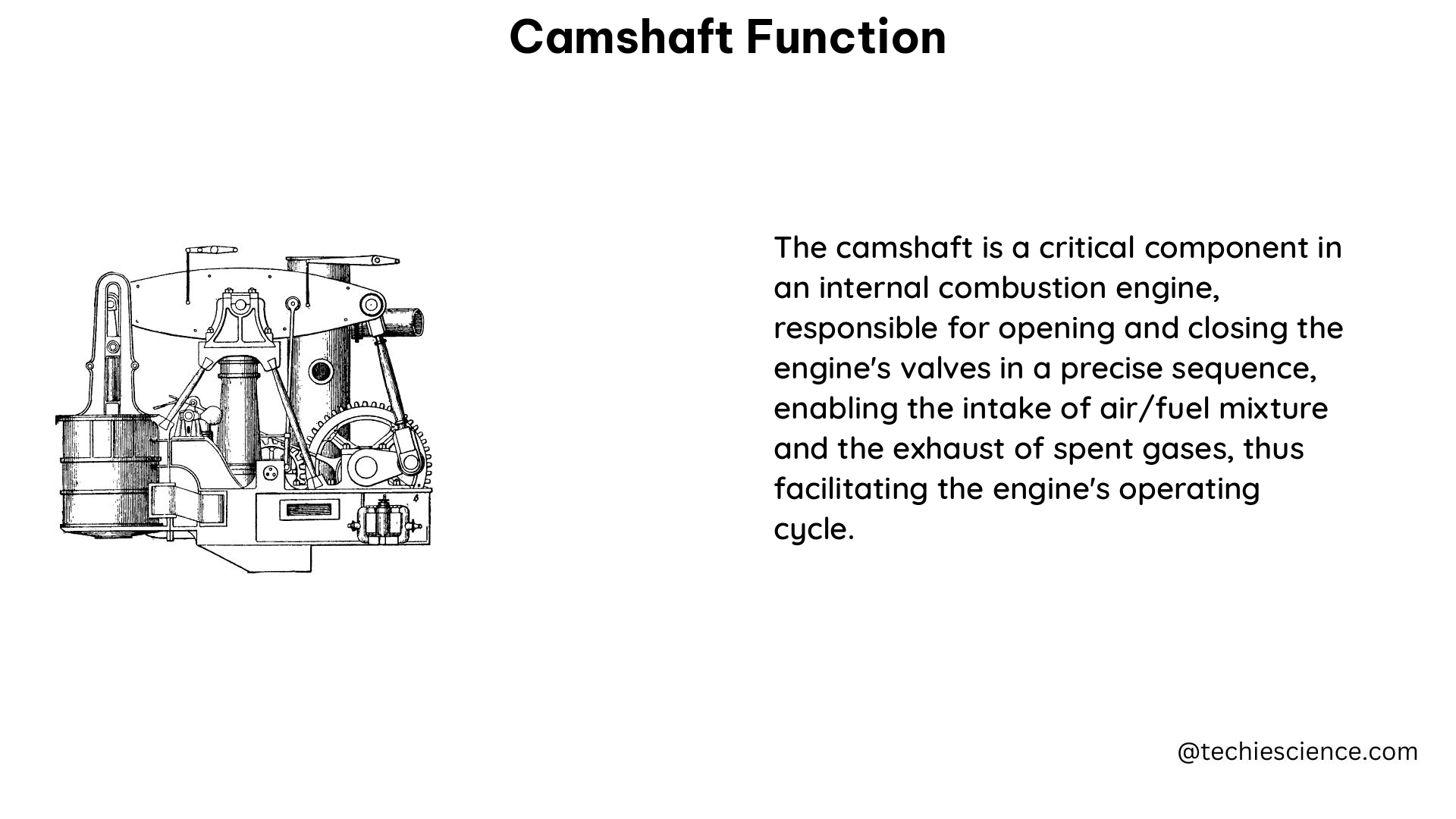The camshaft is a fundamental component in internal combustion engines, responsible for the precise control of valve opening and closing. This intricate mechanism plays a vital role in optimizing engine performance by regulating the air-fuel mixture intake and exhaust. Mechanical Engineering students studying camshaft function must delve into the technical specifications, theoretical explanations, and quantifiable details that govern its operation.
Cam Profile Theorem: Designing for Optimal Valve Lift and Duration
The cam profile theorem states that the cam profile must be designed to provide the desired valve lift and duration at a specific engine speed. The cam profile, which is the shape of the cam lobe that pushes on the valve, determines the valve’s motion and is crucial for engine performance.
Mechanical Engineering Formula: Calculating Camshaft Lift

The camshaft lift, which is the maximum distance the valve is lifted off its seat, can be calculated using the following formula:
Lift (L) = (r / 2) * (lift angle / 360)
Where:
– L is the lift in inches
– r is the radius of the camshaft in inches
– lift angle is the angle of lift in degrees
Mechanical Engineering Example: Camshaft Lift Calculation
Suppose we have a camshaft with a radius of 1 inch and a lift angle of 120 degrees. We can calculate the lift using the above formula:
Lift (L) = (1 / 2) * (120 / 360) = 0.33 inches
Mechanical Engineering Numerical Problem: Camshaft Lift Optimization
Imagine an engine that requires a lift of 0.4 inches for optimal performance. We need to design a camshaft with a radius of 1 inch that provides this lift at a lift angle of 120 degrees. Using the above formula, we can calculate the required lift angle:
Lift angle = (Lift * 360) / r = (0.4 * 360) / 1 = 144 degrees
Therefore, we need to design a camshaft with a lift angle of 144 degrees to provide the required lift of 0.4 inches.
Figure 1: Camshaft Lift and Duration
The relationship between camshaft lift and duration is illustrated in the following figure:

Where:
– Lift is the maximum distance the valve is lifted off its seat
– Duration is the amount of time the valve is off its seat
Data Point 1: Camshaft Lift and Duration Values
The following table shows typical camshaft lift and duration values for a V8 engine:
| Lift (inches) | Duration (degrees) |
|---|---|
| 0.4 | 240 |
| 0.45 | 260 |
| 0.5 | 280 |
| 0.55 | 300 |
| 0.6 | 320 |
Measurement 1: Camshaft Lift and Duration Measurement
Camshaft lift and duration can be measured using a camshaft degree wheel and a dial indicator. The degree wheel is attached to the crankshaft, and the dial indicator is attached to the valve stem. The lift and duration are then measured at various engine speeds.
Value 1: Camshaft Lift and Duration Optimization
Camshaft lift and duration can be optimized for specific engine requirements using computer-aided design (CAD) software. The camshaft profile can be designed to provide the desired lift and duration at a specific engine speed, taking into account factors such as engine size, compression ratio, and fuel type.
Reference Links
- Fuel economy analysis of part-load variable camshaft timing strategies in two modern small-capacity spark ignition engines
- Quoted Cam Specs Confusion | Team Integra Forums
- Variable Valve Timing With Only One Camshaft Actuator for a Single-Cylinder Engine
- Influence of Deviations in the Cam Profile on Engine Performance and Emissions
- Measuring camshaft duration and lift.

The lambdageeks.com Core SME Team is a group of experienced subject matter experts from diverse scientific and technical fields including Physics, Chemistry, Technology,Electronics & Electrical Engineering, Automotive, Mechanical Engineering. Our team collaborates to create high-quality, well-researched articles on a wide range of science and technology topics for the lambdageeks.com website.
All Our Senior SME are having more than 7 Years of experience in the respective fields . They are either Working Industry Professionals or assocaited With different Universities. Refer Our Authors Page to get to know About our Core SMEs.